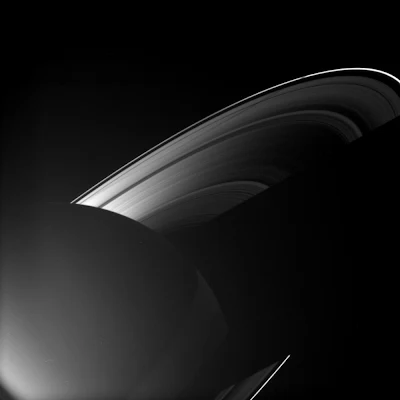The Cassini spacecraft takes one of its last good looks at Iapetus, a Saturnian moon that I've been researching here along with Saturnalian worship by elites for a while.
This view looks toward the south pole of Iapetus (1,471 kilometers, or 914 miles across), and lit terrain seen here is in the southern latitudes of the trailing hemisphere. There is only one other planned viewing opportunity of Iapetus left in Cassini's Solstice Mission, in March 2015.
See PIA11690 to learn more about the color anomaly on Iapetus. See PIA08404 to learn more about that moon's equatorial ridge that is hard to accept as natural.
The image below the painting was taken in visible light with the Cassini spacecraft narrow-angle camera on June 7, 2011. The view was obtained at a distance of approximately 863,000 kilometers (536,000 miles) from Iapetus and at a Sun-Iapetus-spacecraft, or phase, angle of 98 degrees. Image scale is 5 kilometers (3 miles) per pixel.
I'm over Saturnalia now but it was a trip finding out it's more than just a pretty face. It's worthwhile digging into the JPL (Jack Parsons/Jet Propulsion) Laboratories' founder and his Aleister Crowley connections.
It's unfortunate that the bad boys get all the attention. I'd like to have had the time to give Venus and Jupiter more attention.
In 1669 Giovanni Cassini moved to France and through a grant from Louis XIV of France helped to set up the Paris Observatory, which opened in 1671; Cassini would remain the director of the observatory for the rest of his career until his death in 1712. In 1673 he became a French citizen. For the remaining forty-one years of his life Cassini served as astronomer/astrologer to Louis XIV ("The Sun King"); serving the expected dual role yet focusing the overwhelming majority of his time on astronomy rather than the astrology he had studied so much in his youth.
During this time, Cassini's method of determining longitude was used to measure the size of France accurately for the first time. The country turned out to be considerably smaller than expected, and the king quipped that Cassini had taken more of his kingdom from him than he had won in all his wars. Cassini went blind in 1711.
The Cassini-Huygens mission is a cooperative project of NASA, the European Space Agency and the Italian Space Agency. The Jet Propulsion Laboratory, a division of the California Institute of Technology in Pasadena, manages the mission for NASA's Science Mission Directorate, Washington, D.C. The Cassini orbiter and its two onboard cameras were designed, developed and assembled at JPL. The imaging operations center is based at the Space Science Institute in Boulder, Colo.
For more information about the Cassini-Huygens mission visit http://saturn.jpl.nasa.gov. The Cassini imaging team homepage is at http://ciclops.org.





































